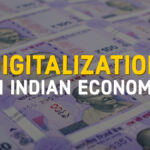This International Women’s Day, we look at the impact of COVID-19 Women Self-Help Groups of Odisha. While several studies have been done highlighting the role of WSHGs in providing support and sustaining livelihoods during the tough times of the pandemic, not much has been looked upon with regards to the impact on these WSHGs during the COVID-19 pandemic. The pandemic seems to have altered many facets of the lives of the WSHG members. However, a majority of them are optimistic about their activities and income returning to pre-pandemic levels in the near future.
Disruptions caused by the COVID pandemic have affected all imaginable sectors. Yet, as observed in most other disasters, women have been one of the worst affected communities during the pandemic. With around 6.3 million Self Help Groups (SHGs) in India, these play a vital role in rural women’s social and economic upliftment.
Since 1990, the state of Odisha has been witnessing the growth of women SHGs in its villages and suburbs. The Mission Shakti program of the Government of Odisha has been promoting Women SHGs (WSHGs) since 2001 to foster women’s social empowerment and economic independence. Nearly 70 lakh women have been organized into 6 lakh groups in all blocks and urban local bodies of the state so far. Records show that WSHGs in Odisha are involved in a broad spectrum of occupations ranging from Forestry and Agriculture to Animal Husbandry and Handicrafts. These groups also play a major role in linking women with formal financial institutions and promoting financial inclusion. While several studies have been done highlighting the role of WSHGs in providing support and sustaining livelihoods during the tough times of the pandemic, not much has been looked upon with regards to the impact on these WSHGs during the COVID-19 pandemic. The present study aims to analyze and understand the socio-economic impact of COVID-19 on the WSHGs of Odisha.
AREA OF STUDY
The above research was done through a telephonic remote survey and covered nearly 11 districts of Odisha. These were the districts of Kalahandi, Bhadrak, Kendrapara, Nabarangpur, Puri, Sambalpur, Sonepur, Angul, Jajpur, Bargarh, and Cuttack. These districts represent the major geographical and cultural communities of Odisha. The SHGs from these districts were involved in a wide spectrum of occupations which were grouped into 3 major categories i.e., Agro-based, Animal Husbandry and allied activities, and Handicrafts. Since these three categories have very different demand and supply trends, more in-depth insight into how the pandemic effects are felt across industries was analyzed. These 11 districts have distinct cultural, socio-economic, and linguistic identities.
METHODOLOGY
Due to the ongoing COVID pandemic, the survey was conducted in a remote manner via telephonic conversations. At first, a preliminary study was done to get an idea about the SHGs, their functioning and their present status keeping Odisha in focus. After that, the contact details and addresses of the SHGs were accessed from the official database of the Mission Shakti website. A consolidated questionnaire was prepared keeping in mind what indicators and parameters would give a good picture of the socio-economic impact of COVID on the SHGs. After this, the SHGs were contacted one by one over the course of 7 days. They were interviewed and responses were recorded. The questionnaire was translated to the local language i.e., Odia, and the survey was also taken in the same language. The telephonic conversations were recorded for future references.
From the data obtained about the number of members in each SHG, the median membership was found to be 11. The highest membership was that of Panchayat Mahashakti SHG of Puri with a record 2500 members. The mean active years are 13. The oldest SHG was found to be the Maa Mangala SHG of Cuttack which was founded 23 years ago in 1999. The youngest SHG was the Jai Maa Mangala SHG of Sambalpur which was founded 3 years ago in 2019. The data was collected, analyzed and the key outcomes are presented ahead.
UNDERSTANDING OCCUPATION, EDUCATION, AND SOCIAL STANDING

- The major occupational areas were categorised into three broad categories as shown, i.e., Agro, Handicrafts and Animal Husbandry and allied activities.
- The majority of the SHGs are involved in Animal Husbandry and allied activities which include dairy farming, goat rearing, pisciculture, apiculture and poultry farming.
- The Agro based SHGs were mainly involved in mushroom farming, rice cultivation or paddy procurement, ornamental plants etc.
- Another major group was those of the handicraft businesses which were involved in toy making, decoration items, paintings etc. They were the most affected during the pandemic.

- 16 out of 21 SHGs reported that the majority of their members’ education was below matriculation, while 5 out of 21 reported majority of their members had qualified matriculation and above.
- Out of 21 SHGs, 19 reported that all their members are formally associated with the bank and had their own bank accounts. This is an encouraging trend towards ensuring financial inclusion and security.
- However, 18 of these 21 SHGs also reported that not all of their members had access to smartphones. This can be due to reasons like lack of technical know-how or financial constraints. This figure needs to increase as the economy is gradually getting digitized smartphones play an instrumental role in it.
- Out of 21 SHGs, 11 SHGs reported that 50% or more of their members had a pucca house of their own to live in. 10 SHGs reported that less than 50% of their members had a pucca house. This shows that the pucca house schemes of both state and central government have to go a long way to ensure everyone owns a safe and secure pucca house in a state which is regularly battered by natural calamities like cyclones and floods.

COVID-19 IMPACT

- 71% of the SHG respondents reckoned that COVID-19 had significantly affected their activities which had an impact on their socio-economic status.

- 57% of the SHGs claimed that the lockdown and restrictions did affect interaction and contacts among themselves, while rest 43 % claimed they were able to maintain links and contacts amidst restrictions and COVID protocols. This, in turn, affected their planning and coordination and subsequently their activity.

- 86% of the respondents acknowledged that they received updates regarding COVID, guidelines, information regarding restrictions, and healthcare facilities from time to time by the government via phones, TVs, radios, newspapers, and other means of mass communication.

- Nearly 52% of the respondents claimed that they didn’t receive any kind of assistance from the Mission Shakti department which was specially created for this purpose.
- While 48% claimed that they did receive some kind of assistance from Mission shakti but the help clearly wasn’t able to reach everyone.

- 62% of the respondents believe that the PM Garib Kalyan Yojana package helped them to tide over uncertain periods and ensure food security.
- It was found that majority of women involved with SHGs depend on ration programmes of the government.
- 38% of the respondents claimed that the PMGKY did not do much help to them. Some claimed that they were given insufficient ration or not given at all.

- 81% of the respondents acknowledged that they were provided COVID related healthcare services free of cost in their nearest available medical centres or hospitals.
- This is important since COVID related health expenses are sometimes very high for such low-income groups to bear.
- Rest 19% claim that they had to spend money from their own pocket for accessing healthcare facilities. These respondents had to face financial hardships for a longer period of time. However, only one group reported the death of their member from COVID.
FINANCIAL IMPACT ASSESSMENT
The study shows that the median annual income pre-pandemic period was Rs. Two Lakh which slashed down to Rs. Ninety Thousand in the post-pandemic period.
- Out of 21 SHGs nearly 17 SHGs reported a decrease in annual income in the COVID era.
- Surprisingly 4 SHGs also reported an increase in annual income during the pandemic
- These were mainly involved in the agro and animal husbandry-based occupations and their success can be attributed to timely response, good coordination and cooperation and planning.
- Out of 21 SHGs, 11 reported that they had to shift to other occupations in order to sustain themselves since their initial occupation was badly affected by the lockdown and restrictions. They attributed this to disruptions in supply chain and logistics and decrease in demand. Some also reported a change in occupation did prove profitable and they want to continue with the new ones.
- The rest 10 SHGs continued with their initial profession because either they were able to show resilience and were able to adjust with the meagre income or they simply because they didn’t had the necessary skills or resources to start something new.

- 95 % of the SHG respondents reported that all their members had another earning member such as their husband, father, son etc.
- The presence of another source of income in the family could have helped them to stride through difficult times.

Majority of the SHGs reported that the 1st wave affected them the most than the 2nd and 3rd wave. This was mainly due to the unexpected and sudden nature of the first lockdown and little information about COVID.
IMPACT ON EDUCATION OF CHILDREN

- As expected, all of the 21 SHG respondents reckoned that the education and schooling of their children was affected due to COVID, lockdown and the subsequent closure of schools and virtual mode of teaching.
- However, it is concerning to see that only 1/3rd of the respondents reported that their children were able to attend online classes.
- This was primarily due to unavailability of smartphones and laptops and financial constraints associated with it, poor internet coverage in remote areas and lack of interest shown by children.
VACCINATION STATUS

- This indicator is by far one of the most crucial indicators.
- Vaccination is considered to be the key factor behind resumption of economic activities.
- It is encouraging to know that except for one rest other twenty SHG respondents claimed that 100% of their members have received both doses of the vaccine. While the one that reported no, actually had only two members who were not fully vaccinated.
- Vaccination also encouraged them to move out and interact with other members and other business communities.
RESILIENCE AND THE ROAD AHEAD
- 17 out of 21 SHGs claimed that they made preparations to deal with the 2nd and 3rd waves after the first 1st wave had receded, while only 4 had reported that they were not prepared for future waves.
- Among those who made preparations and made their strategy after the 1st wave, showed plausible resilience and improvement.

- Experiences from the past and learning from them is the key to keep socio-economic resilience afloat.
- It was encouraging to note that 86 % of the SHGs were optimistic and hopeful of the future of their business and organisation while the rest 14 % either their SHG was drastically affected both financially and socially due to which some even had to completely shut their operations or they thought it will take longer time for reaching pre-pandemic levels.
CONCLUSIONS
The survey found that the impact of the COVID pandemic and lockdown had a fairly distributed effect on each SHG. Most of the SHGs reported that pandemic had affected their activities and income. The SHGs were mainly involved in 3 broad occupational categories i.e., Agro-based, Animal Husbandry and allied activities, Handicrafts, and others. While some SHGs were resilient enough to stick to their occupation, some had to shut down their operations or shift to other activities for survival. But it is encouraging to know that most SHG members had basic financial literacy and had their personal bank accounts.
However, when it comes to ownership of smartphones, they somewhat lagged behind. This was probably due to financial constraints or lack of technical knowledge, though most of them reported that they regularly received COVID-related information from the government. 52% of the SHGs claimed that they didn’t receive any kind of support from Mission Shakti during the pandemic while 48% acknowledged support from the department. The majority of SHGs acknowledged that 50% or more of their members had pucca houses, but it was still beyond reach for some. More than 80% of respondents claimed that they received COVID-related healthcare facilities free of cost. Nearly all of the respondents agreed that there was another earning member apart from them in the family.
All of them unequivocally accepted that the education of their children was affected due to the lockdown and closure of schools and few respondents reported that their children were able to attend online classes which is a major problem. It was however encouraging to know that nearly all SHGs reported 100% vaccination of their members. While many claimed the PMGKY benefitted them others denied it. Most of them believed that the lockdown and restrictions had limited the interaction among the members.
The data suggest that the first wave in 2020 affected more SHGs than the second and third waves. After the first wave, only 38% SHGs reported a significant recovery of their incomes. And 17 out of 21 SHGs made preparations to deal with the 2nd and 3rd wave after the 1st wave. Finally, 86% of the SHGs were optimistic about their activities and income returning to pre-pandemic levels in the near future.






















































Pingback: Women economic empowerment by the private sector - TheRise.co.in